Lost Lake Details
Last Sunday we Bellinghamsters enjoyed one of several fantastic sunny and relatively warm February days. It was time for another calf-burning loop hike in the Chuckanuts. It had only been a month since I’d been to Lost Lake but I decided to make a return visit. I started hiking from the North Chuckanut trailhead around 9 am, giving myself plenty of time to explore at the lake. This time I hiked the loop clockwise, visiting Lost Lake first and returning via the Chinscraper and Chuckanut Ridge trails. See the Chuckanut trails map, and carry it with you if you go.
It didn’t take much time to warm up, hiking rapidly uphill. I stripped down to running shorts and a t-shirt, which was all I needed most of the day even though I met a lot of people who were dressed much warmer. I carried long pants, rain pants, a wool sweater, fleece jacket, and raincoat in my daypack just in case. A liter of water, a couple of granola bars, and a bag of mixed nuts was my snack for the day. Map, compass, headlamp, firestarter, and pocket knife rounded out my gear. Well, that and my Canon G12 pocket camera. It may have been a fitness @Garcinia Cambogia Reviews hike in my head, but I can’t go out without some means of capturing some of what I observe.
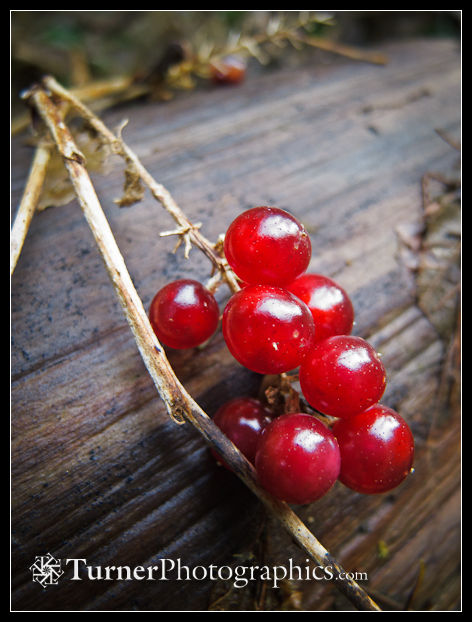
The first detail I noticed was this bunch of False Solomon’s Seal (Maianthemum racemosum) berries draped across a decaying log. Their bright red color grabbed my attention so I stopped. As I looked around I found several more stems with a few berries lying on the ground, but the first ones I saw made the nicest image.
For this photo I put my camera into macro mode, lens at wide angle, and the aperture wide open. I wanted shallow depth of field to concentrate attention on the berries. I rested the camera on my hand, which was against the log, for stability. I gave the camera time to lock focus on the berries and gently squeezed the shutter release. My hand raised the camera an inch or so to create the composition I wanted.
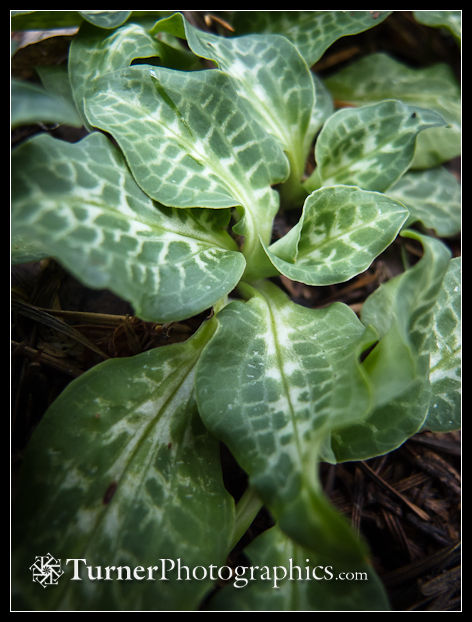 A little further along the trail the bright white on green pattern of Rattlesnake-plantain (Goodyera oblongifolia) foliage caught my eye. This is one of our northwest native orchids. In July it will send up a flower stalk with small creamy white blossoms. But most of the year it’s recognized just by the rosettes of evergreen leaves. It’s quite common, but scattered, growing in rich humus and usually in deep shade.
A little further along the trail the bright white on green pattern of Rattlesnake-plantain (Goodyera oblongifolia) foliage caught my eye. This is one of our northwest native orchids. In July it will send up a flower stalk with small creamy white blossoms. But most of the year it’s recognized just by the rosettes of evergreen leaves. It’s quite common, but scattered, growing in rich humus and usually in deep shade.
My photo technique was the same for the orchid as it was for the berries. In both cases I exposed several frames, moving the camera slightly to adjust the composition and to make sure I achieved the sharpness I wanted. I selected my favorite in Adobe Lightroom and did a little post-processing.
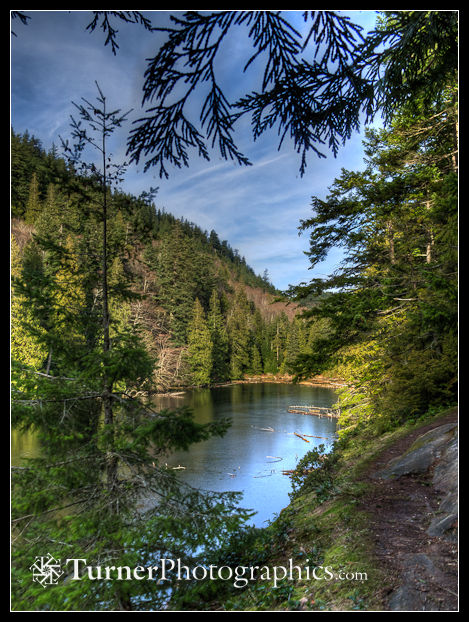 I headed down to Lost Lake itself when I arrived at the trail junction. The approach is as wet and muddy as ever. Once over the messy parts the trail along the east bank, which runs on the crest of a small ridge, is dry and pleasant. About halfway down the lake there’s a big exposed rock outcrop. That’s where I stopped to make this image.
I headed down to Lost Lake itself when I arrived at the trail junction. The approach is as wet and muddy as ever. Once over the messy parts the trail along the east bank, which runs on the crest of a small ridge, is dry and pleasant. About halfway down the lake there’s a big exposed rock outcrop. That’s where I stopped to make this image.
For this photo I could see that the brightness range between the forest, lake, and sky was too great to capture in a single exposure. HDR, high dynamic range, photography was called for. I set my camera to automatically bracket three exposures.
I used Photomatix Pro to align and process the three frames into a single image, playing with various settings and adjustments until I was satisfied with the result. I wanted a slightly surreal, but still fairly natural-looking photograph. This is definitely enhanced beyond what I saw with my eyes.
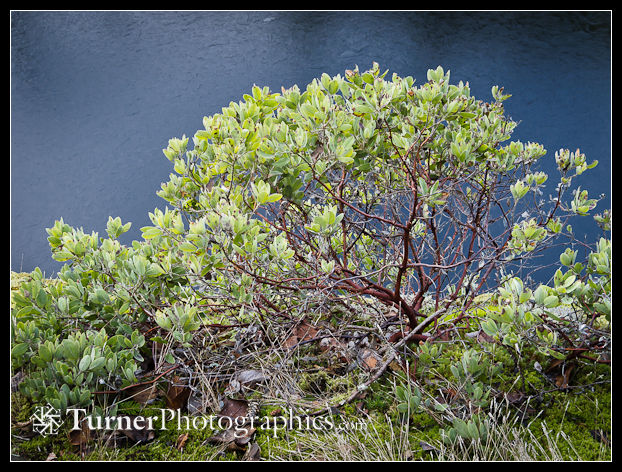
This little shrub, Hairy Manzanita (Arctostaphylos columbiana), is the only member of the genus native to Washington. I’ve seen it on other “balds” in the Chuckanuts, but didn’t remember seeing it at Lost Lake before. Obviously it’s been there for a long time and I just hadn’t noticed the plant on my previous visits several years before.
For this photo I wanted the clean background of the ice-skimmed lake to contrast with the green foliage. I moved my camera up and down until I had nothing but lake in the background, keeping the opposite shore out of the frame. Centering the shrub horizontally in the frame works because it’s a generally symmetrical subject. Note that it’s not really centered since the trunk is coming out of the mosses at the lower right power point (on the rule of thirds grid).
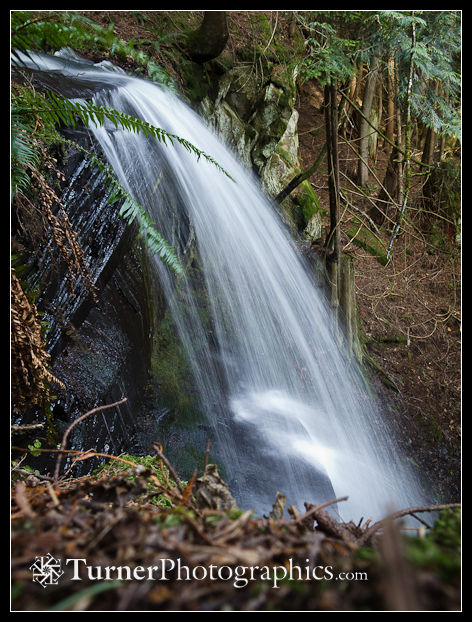 Lost Lake is a bit unusual in that the outlet stream exits the lake in the middle of a long side, flowing through a crack in the Chuckanut sandstone that encloses the skinny lake. It’s really perched on a shelf on the side of a steep hillside.
Lost Lake is a bit unusual in that the outlet stream exits the lake in the middle of a long side, flowing through a crack in the Chuckanut sandstone that encloses the skinny lake. It’s really perched on a shelf on the side of a steep hillside.
This waterfall is down that slope a short distance from the lake outlet. I carefully scrambled down to the top of the falls. There’s a cliff directly below my camera vantage point and I didn’t want to slide off and crash onto the rocks and trees below.
To make this exposure of the falls without a tripod I knelt in the moss and placed my camera on the ground to steady it. I selected a shutter speed of 1/4 second to blur the falls and adjusted the ISO and aperture to get the right exposure. I braced my elbow on the ground, gently pressed the camera into the moss carpet, and slowly squeezed the shutter release. Even if I’d had a tripod with me I probably would have used the same technique because I liked the vantage point right at the lip of the falls.
I seem to have spent a fair amount of time with my camera on the ground on this trip. It’s a really useful technique for holding it steady and at the same time getting a view of the world that not many people get down low to experience. What have you seen lately from a slug’s-eye viewpoint?

